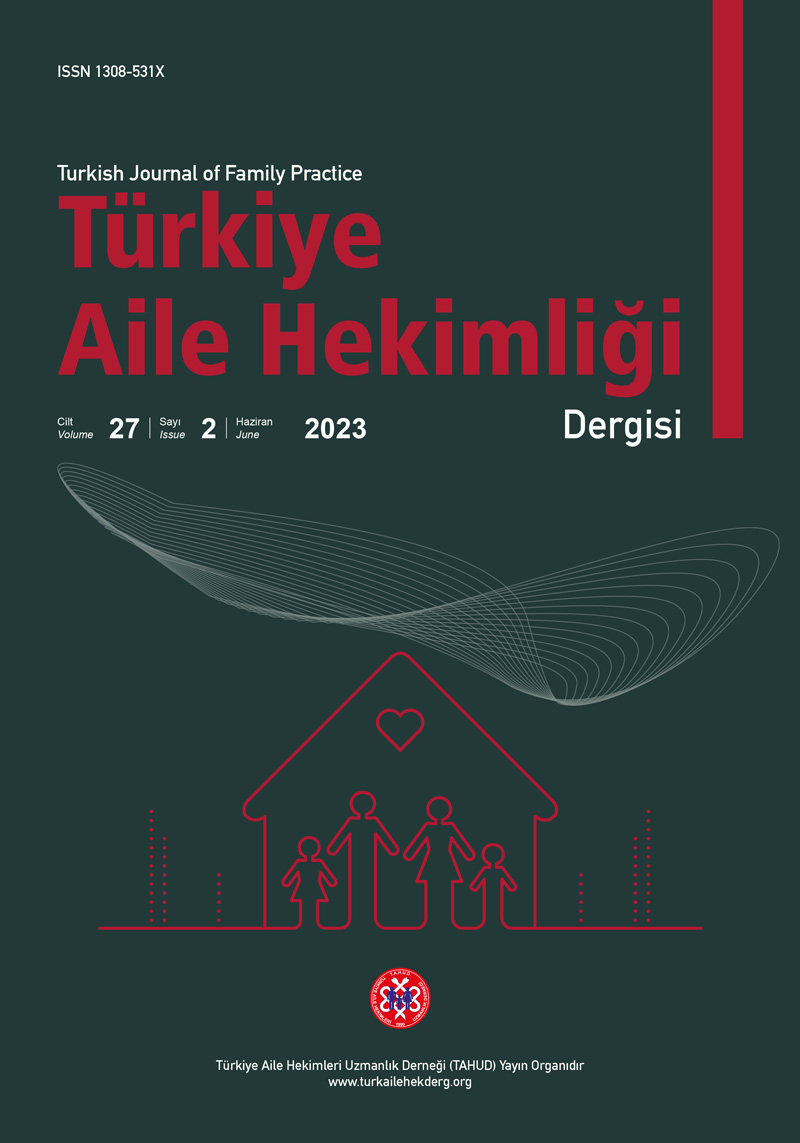Öz
Amaç: İnternet kullanımının yaygınlaşmasıyla birlikte internetten sağlık arama davranışı ve siberkondri düzeyleri de artmaktadır. Bu çalışmada interneti yoğun olarak kullandığı düşünülen üniversite öğrencilerinde siberkondri ve anksiyete düzeyinin ölçülmesi ve ilişkili faktörlerin değerlendirilmesi amaçlanmıştır.
Yöntem: Bu araştırmaya 1 Şubat-30 Nisan 2022 tarihleri arasında Selçuk Üniversitesi Tıp Fakültesinden 419 öğrenci, Sağlık Bilimleri Fakültesi ve Hemşirelik Fakültesinden 414 öğrenci, Fen Fakültesi ve Edebiyat Fakültesinden 423 öğrenci dahil edildi. 1256 katılımcı ile çalışma tamamlandı. Çalışmanın verileri, üç bölümden oluşan bir anket formuyla toplandı. Birinci bölümde araştırmacı tarafından hazırlanan katılımcıların sosyodemografik özelliklerini ve internetten sağlık arama davranışlarını sorgulayan anket bilgi formu, ikinci bölümde Siberkondri Ciddiyet Ölçeği, üçüncü bölümde ise Beck Anksiyete Ölçeği yer aldı.
Bulgular: Çalışmaya katılan 1256 öğrencinin %67,2’si kadın, %32,8’i erkek olup yaş ortalaması 20,90±1,38’di. Katılımcıların SCÖ puan ortalaması 73,01±19,22, BAÖ puan ortalaması 14,52±11,48’idi. Fakültelere göre SCÖ ortalama puanları karşılaştırıldığında, tıp fakültesi ve sağlık bilimleri-hemşirelik fakültesi puanları, diğer fakülte puanlarına göre istatistiksel açıdan anlamlı şekilde yüksek bulundu (p<0,001). Sosyal ağlardan ve internet sitelerinden elde edilen sağlık bilgisini güvenilir bulan öğrencilerin SCÖ puan ortalamaları anlamlı şekilde yüksek bulundu (p<0,001). Katılımcıların sağlıkla ilgili internette geçirdikleri ortalama süre ile SCÖ ve alt boyut puanları arasında pozitif yönde anlamlı korelasyon tespit edildi. Katılımcıların BAÖ puanı ile SCÖ puanı arasında pozitif yönde anlamlı korelasyon tespit edildi.
Sonuç: Bu çalışmada öğrencilerin siberkondri puanları arttıkça anksiyete puanlarının da arttığı görülmüştür. Sağlık bilimleri-hemşirelik fakültesi ve tıp fakültesi öğrencilerinin siberkondri düzeyi diğer fakülte öğrencilerine göre anlamlı şekilde daha yüksek bulunmuştur. Öğrencilerin sağlık bilgisi arama davranışı özelliklerinin siberkondri düzeyleriyle ilişkili olduğu bulunmuştur.
Anahtar Kelimeler: Anksiyete, internet, siberkondri, üniversite öğrencileri
Telif hakkı ve lisans
Telif Hakkı © 2023 Yazar(lar). Açık erişimli bu makale, orijinal çalışmaya uygun şekilde atıfta bulunulması koşuluyla, herhangi bir ortamda veya formatta sınırsız kullanım, dağıtım ve çoğaltmaya izin veren Creative Commons Attribution License (CC BY) altında dağıtılmıştır.










